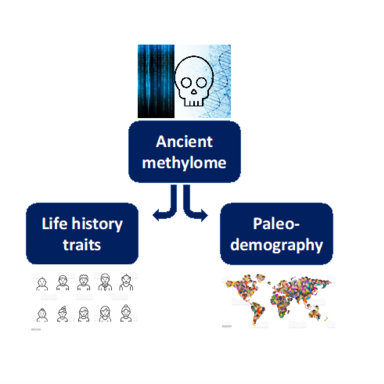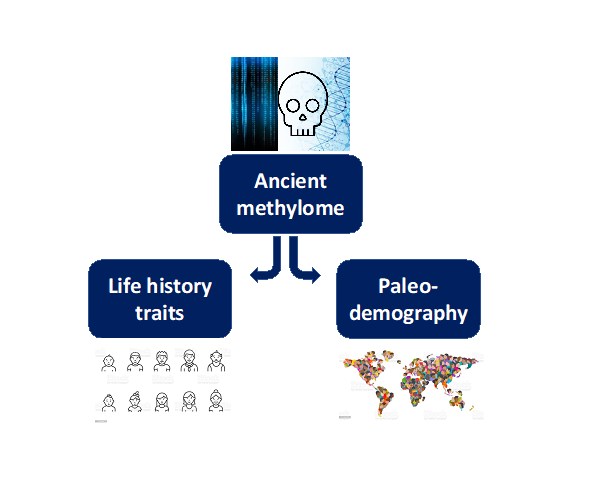Project 1.2

- PhD student: Youssef Tawfik
- Supervisor: Joachim Burger
- Further TAC-members: Ann Kathrin Huylmans, Joan Barau, Miguel Andrade
- Research Group
In this research project, we study human life history in past human populations of the last 20,000 years by combining data and methods from two research fields: palaeogenetics and molecular epigenetics. Based on ancient methylomes and epigenetic predictors, we aim to infer age at death and life history traits, in order to study human paleodemography and physiological evolution.
Life history is defined as the series of changes undergone by an organism during its lifetime, including patterns of development, growth, maturation, reproduction, survival, and lifespan. Hence, life history traits determine survival and reproduction, the major components of fitness. Thus, by studying their evolution we could better understand adaptation, the most fundamental topic in evolutionary biology. By using palaeogenetics, we aim to better understand the evolution of human life history which, until recently, were mainly based on studying living populations.
In the last decade, a new field of research was established: palaeo-epigenetics, after researchers were able to detect DNA methylation in ancient genomes by sequencing DNA isolated from archeological skeletons, and later, scientists published the first genome-wide ancient methylome. After the death of an individual a natural process occurs to the DNA called post-mortem damage (PMD). The two main signatures of PMD are DNA fragmentation and cytosine deamination. Naturally, cytosine (C) is deaminated into uracil (U), in a process also called C to U transition. However, if a cytosine is methylated, the cytosine is deaminated into a thymine (C to T transition). Currently, by using high-throughput sequencing techniques and computational tools, we can infer/predict methylated CpG sites by detecting these C to T/U transitions.
In this project, we aim to set up, validate, and optimize computational pipelines to predict chronological age and life history traits from ancient epigenomes, in particular maximum lifespan, gestational time, and age at sexual maturity. We plan to apply these pipelines to ancient high coverage genomes of individuals from various time periods and regions, both publicly available and produced in the lab, covering as much of the human genetic diversity after the “out of Africa”, around 70,000 years ago, as possible.
